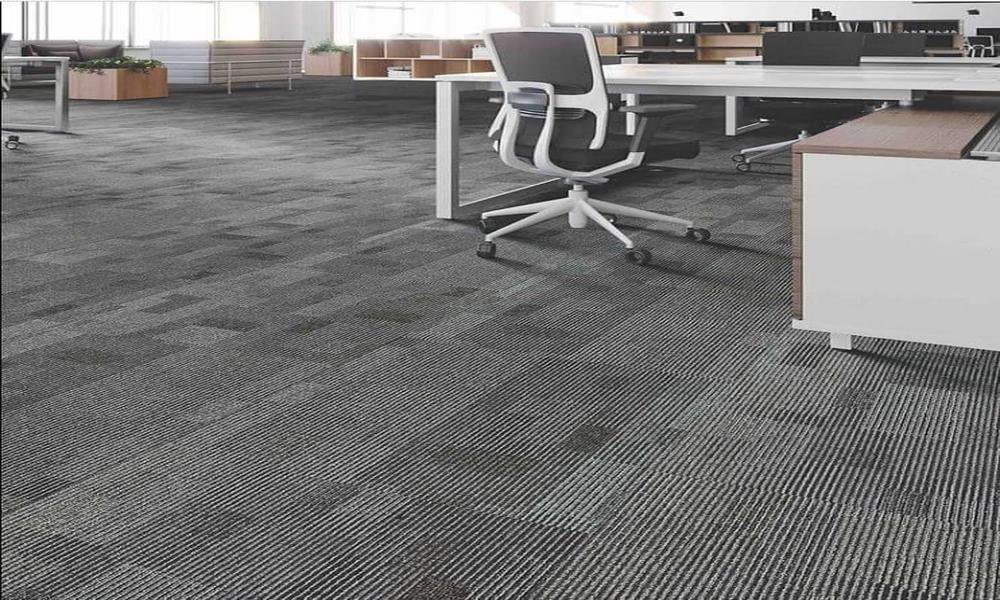
When choosing a carpet for an office, there are several factors to consider such as durability, ease of maintenance, noise reduction, and style. Here are some types of carpets that are commonly used in offices:
Commercial-grade carpet:
Commercial-grade carpets are specifically designed for high-traffic areas and are more durable than residential-grade carpets. They are made with materials like nylon or polypropylene and are available in a variety of colors and styles.
Carpet tiles and Low-pile carpet:
Carpet tiles are small, individual squares of office carpet that can be arranged in different patterns to create a unique look. They are easy to replace if they get stained or damaged, making them a popular choice for offices. Low-pile carpets have shorter fibers and are easier to clean than high-pile carpets. They also offer good traction, making them a safe choice for high-traffic areas.
Berber and Patterned carpet:
Berber carpets are made of tightly woven loops and are known for their durability and stain resistance. They are a great choice for high-traffic areas like office hallways. Patterned carpets can add a touch of style to an office space while also masking stains and wear and tear.
Overall, the best type of carpet for an office will depend on the specific needs and preferences of the business. It’s important to choose a carpet that is durable, easy to maintain, and suits the style of the space.
The Complete Guide to Office Carpeting:
Office carpeting can have a significant impact on the overall look and feel of a workspace. It can also affect productivity and the health of employees. Here is a complete guide to office carpeting to help you choose the right carpet for your office:
Consider the traffic: The amount of traffic in the office will play a major role in choosing the right carpet. For high-traffic areas, commercial-grade carpet or low-pile carpet is recommended. These types of carpets are durable and can withstand heavy foot traffic.
Choose the right material: The most common materials used in office carpeting are nylon, olefin, and polyester. Nylon is the most durable and resilient, while olefin and polyester are budget-friendly options.
Determine the budget: The budget for office carpeting will depend on the size of the office, the type of carpet, and the installation cost. It’s important to set a budget before choosing the carpet to avoid overspending.
Consider maintenance: The maintenance of office carpeting is important to keep it looking new and clean. Low-pile carpeting is easier to maintain than high-pile carpeting, and carpet tiles can be replaced individually if damaged or stained.
Choose the right color and pattern: The color and pattern of office carpeting can affect the overall look of the office. Neutral colors like beige, grey, and blue are popular choices, as they can blend well with any office décor. Patterned carpeting can add visual interest to the space.
Consider noise reduction: Carpeting can help reduce noise in the office, making it a quieter and more productive space. High-pile carpeting or carpet tiles with padding underneath can help absorb sound.
Choose a reputable installer: Choosing a reputable carpet installer is important to ensure the carpet is installed correctly and will last for many years. Look for installers with positive reviews and experience in commercial carpet installation.






